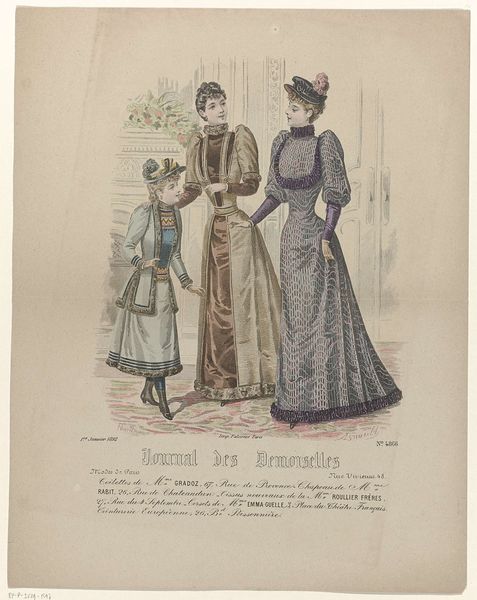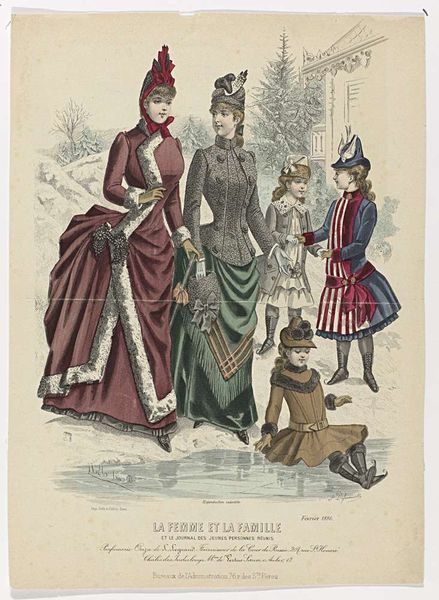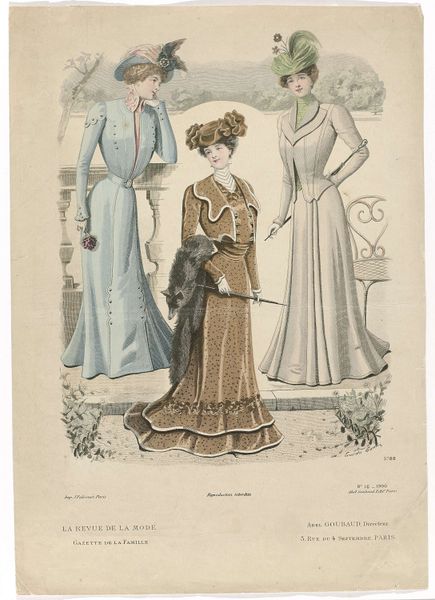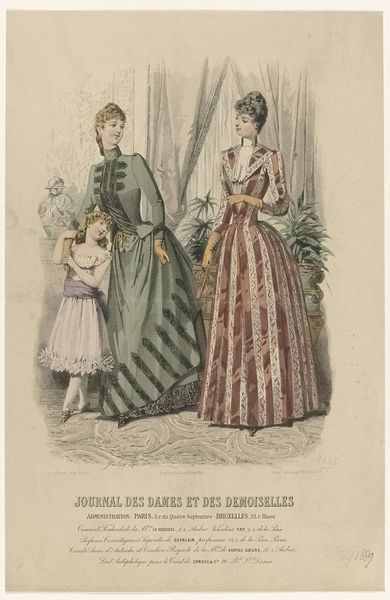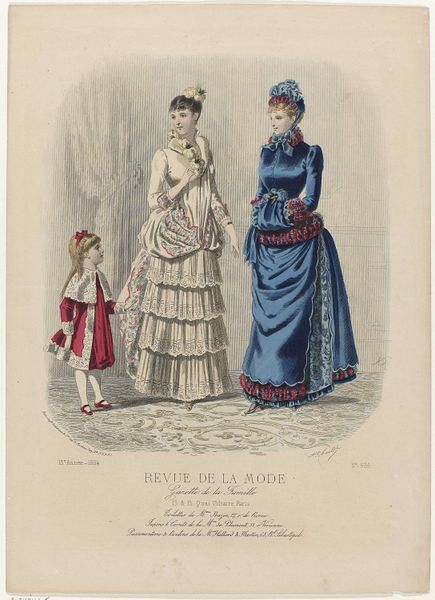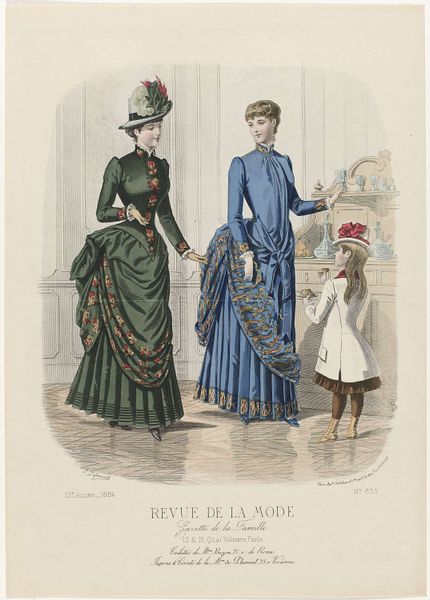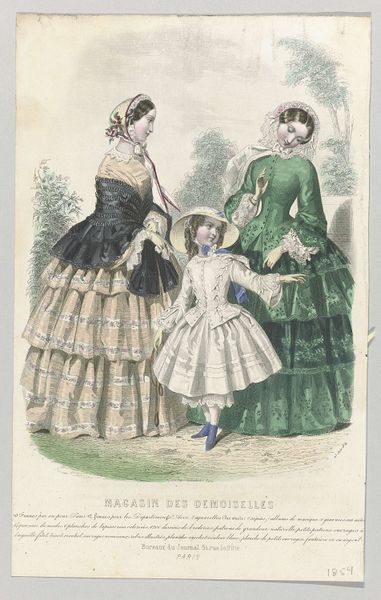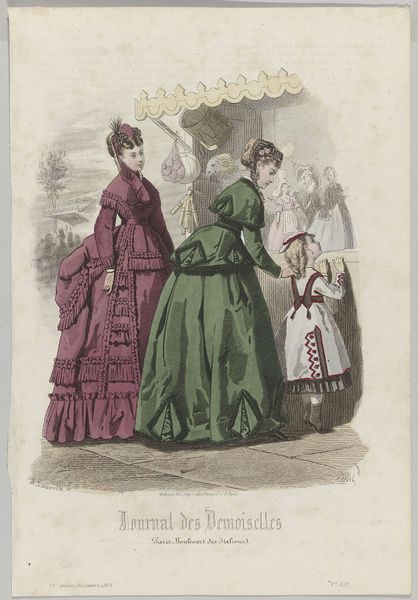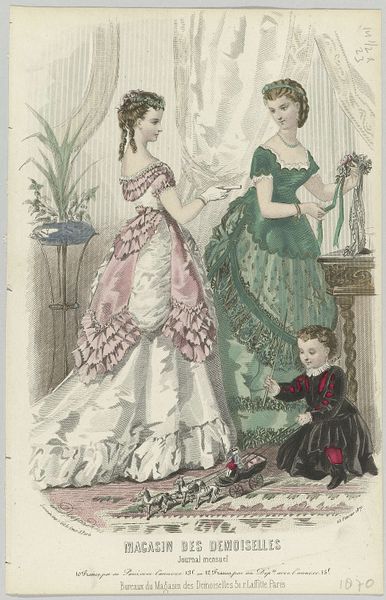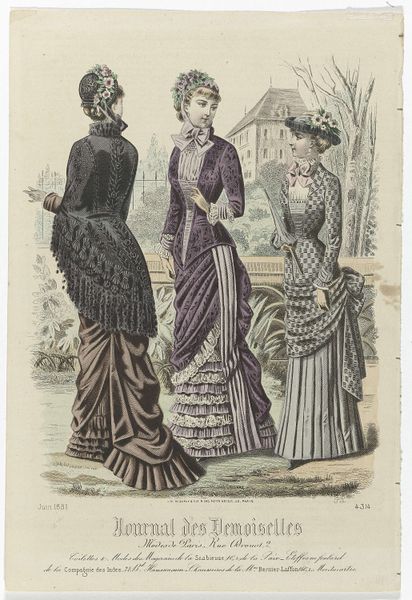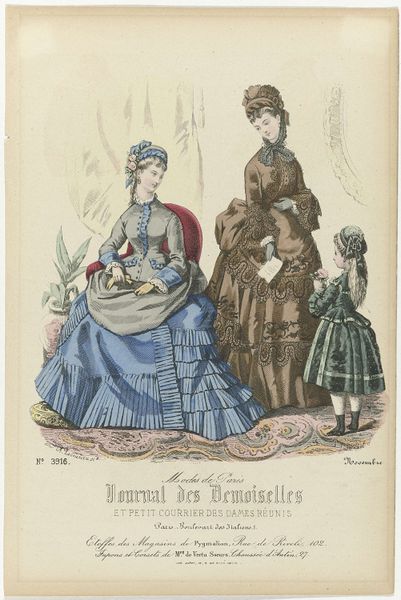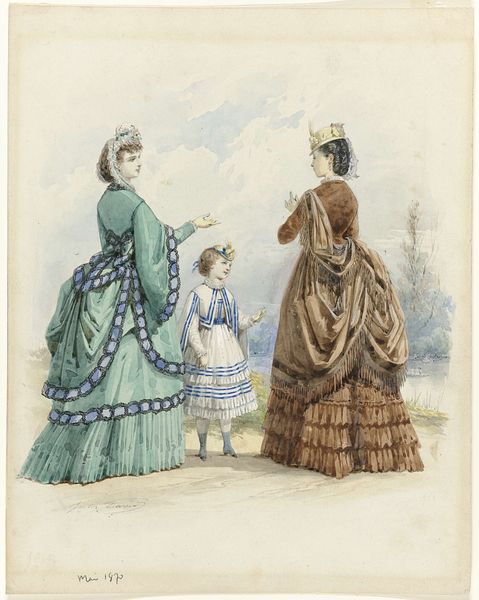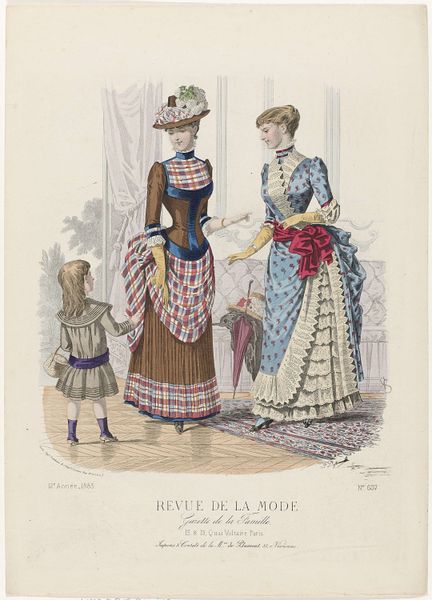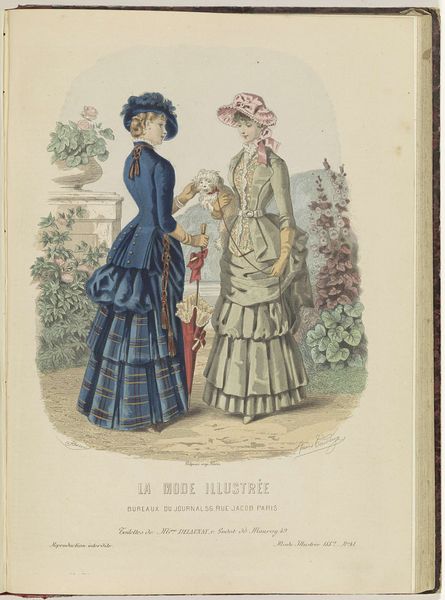
Journal des Demoiselles, 1 mars 1886, No. 4562 : Modèles de Mme Turl (...) 1886
0:00
0:00
drawing, graphic-art, mixed-media, print, etching, paper
#
portrait
#
drawing
#
graphic-art
#
mixed-media
# print
#
etching
#
figuration
#
paper
#
watercolour illustration
#
genre-painting
#
watercolor
Dimensions: height 276 mm, width 185 mm
Copyright: Rijks Museum: Open Domain
Curator: Looking at this fashion plate, titled “Journal des Demoiselles, 1 mars 1886, No. 4562,” purportedly by P. Deferneville, I'm immediately struck by the intricate details of the garments and the artist's command of line and color. The print combines etching with mixed media, showcasing a range of textures. Editor: Yes, there is definitely some very considered graphic work at play. My initial feeling is one of rigid formality, though; the women seem contained, corseted, not just by their clothes but by the social expectations they represent. It speaks of the constraints placed upon women in the late 19th century, literally materialized through fashion. Curator: Certainly, the artist captures a moment where form dictates function, as evident in the tailored waistlines, the structured silhouettes, and the ornamentation – each element conforming to a pre-established aesthetic order. The patterns within patterns are noteworthy. Editor: Precisely, and note the power dynamics in play; it's no coincidence that a journal geared towards young women depicts these codes of dress. The outfits here enforce class distinctions, defining and circumscribing identity. Look at how the little girl's attire attempts to mirror the adults’, inducting her into a system. Curator: Semiotically, each article of clothing functions as a signifier, communicating status, propriety, and adherence to the prevailing cultural norms. The controlled color palette, largely muted blues and browns, lends a sense of measured elegance. Editor: The almost performative nature of dress is palpable, though. There’s an undeniable sense of self-monitoring. What do these constructed images of ideal womanhood, presented as attainable and desirable, mask in terms of labor, both in their production and the restrictive practices required to wear them? Curator: Well, regardless of such critical analyses, one must acknowledge the piece's overall compositional harmony. The artist organizes the figures spatially to lead the eye, employing delicate shading and strategic color placement to create visual depth. Editor: It does draw the eye, doesn’t it? I keep circling back to the little girl and her corseted youth – so emblematic of the period. The whole image is such a loaded sign, signaling conformity in nascent femininity, class aspirations, and the visual regulation of womanhood through dress. Curator: The elegance of line is itself mesmerizing! These garments function more like ornate containers, emphasizing structure, texture, and silhouette above all else. Editor: Thank you, Curator. What this engraving lays bare is how the image becomes another mode for understanding this constructed representation and the politics behind it all.
Comments
No comments
Be the first to comment and join the conversation on the ultimate creative platform.
